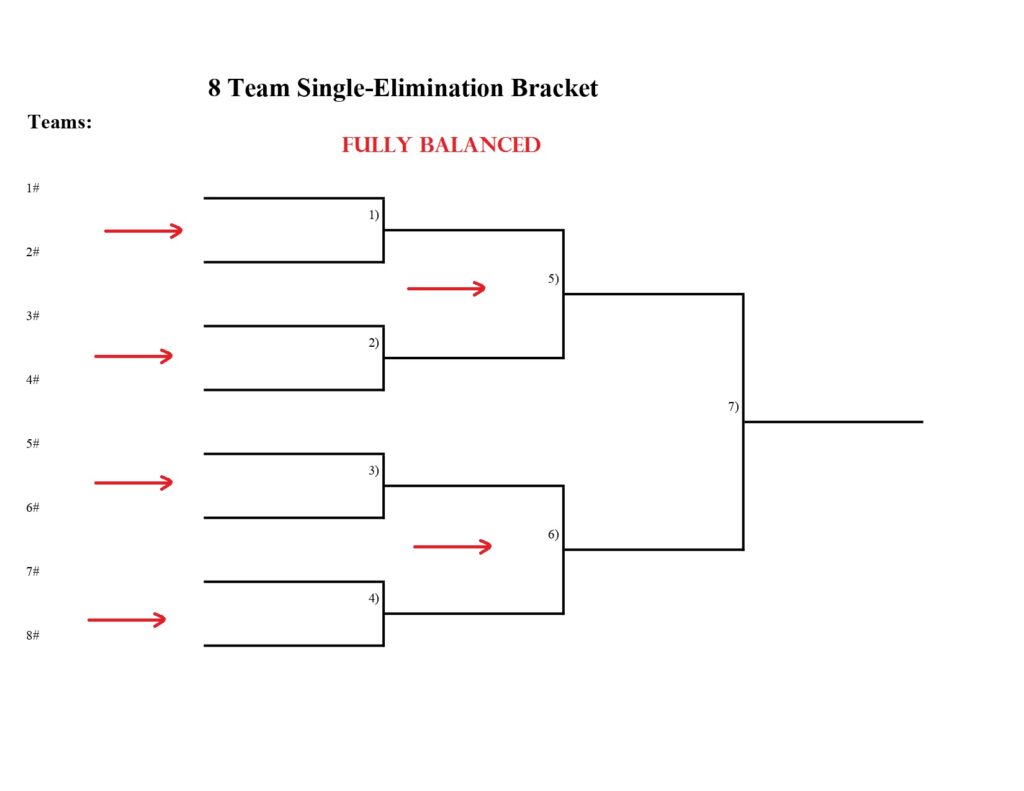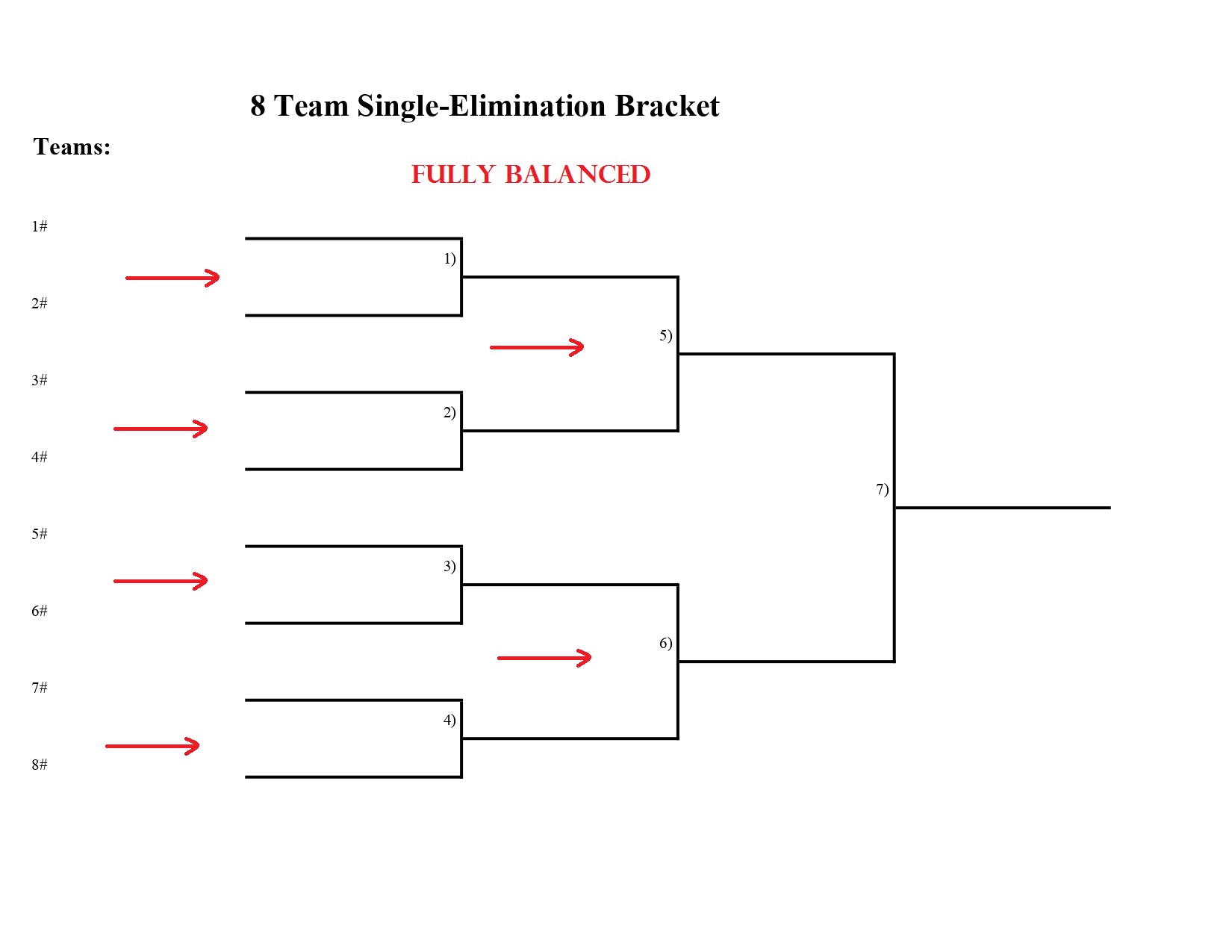
The Ultimate Guide to 64 Single Elimination Brackets: Strategy, Setup, and Best Practices
The 64 single elimination bracket is a popular tournament format, particularly in larger competitions where efficiency and decisive outcomes are paramount. This comprehensive guide delves into the intricacies of the 64 single elimination bracket, covering everything from its basic structure to advanced strategies for organizers and participants. Whether you’re planning a sports tournament, an esports competition, or any other type of contest, understanding the nuances of the 64 single elimination bracket is crucial for ensuring a fair and engaging event.
Understanding the Basics of a 64 Single Elimination Bracket
A 64 single elimination bracket is a tournament format where participants are paired off in matches. The winner of each match advances to the next round, while the loser is eliminated from the competition. This process continues until only one participant remains, who is declared the champion. The defining feature of a single elimination bracket is its unforgiving nature: one loss, and you’re out.
Structure of the Bracket
The 64 single elimination bracket starts with 64 participants in the first round. These participants are seeded or randomly assigned to different positions within the bracket. Here’s a breakdown of how the bracket progresses:
- Round 1 (Round of 64): 32 matches, eliminating 32 participants.
- Round 2 (Round of 32): 16 matches, eliminating 16 participants.
- Round 3 (Round of 16 – Sweet Sixteen): 8 matches, eliminating 8 participants.
- Round 4 (Round of 8 – Elite Eight): 4 matches, eliminating 4 participants.
- Round 5 (Round of 4 – Final Four): 2 matches, eliminating 2 participants.
- Round 6 (Championship): 1 match, determining the champion.
In total, a 64 single elimination bracket requires 63 matches to determine a winner. This format is favored for its speed and simplicity compared to other tournament structures like double elimination or round-robin.
Advantages and Disadvantages of the 64 Single Elimination Bracket
Like any tournament format, the 64 single elimination bracket has its own set of advantages and disadvantages that organizers should consider.
Advantages
- Efficiency: The single elimination format is highly efficient, requiring fewer matches compared to other formats. This makes it ideal for tournaments with time constraints.
- Decisiveness: The winner is definitively determined through a series of head-to-head matches, leaving no room for ambiguity.
- Simplicity: The rules are easy to understand, making it accessible to both participants and spectators.
- Excitement: The high-stakes nature of single elimination brackets creates a sense of excitement and drama, as every match carries significant weight.
Disadvantages
- Potential for Upsets: A single bad performance can lead to elimination, even for highly skilled participants. This can sometimes result in less deserving individuals advancing further than expected.
- Limited Opportunities: Participants who are eliminated early have no further opportunities to compete, which can be frustrating for those who traveled long distances or invested significant time and resources.
- Seeding Challenges: Accurately seeding 64 participants can be challenging, especially if there is limited information about their relative skill levels. Improper seeding can lead to unfair matchups in the early rounds.
Setting Up a 64 Single Elimination Bracket
Creating a well-organized 64 single elimination bracket requires careful planning and attention to detail. Here are the key steps involved:
1. Determine Seeding
Seeding is the process of ranking participants based on their perceived skill level. This is crucial for ensuring that the strongest competitors are distributed throughout the bracket and don’t face each other in the early rounds. Common seeding methods include:
- Ranked Seeding: Participants are ranked based on past performance, rankings, or other objective criteria.
- Random Seeding: Participants are randomly assigned to positions within the bracket. This is often used when there is limited information available about their skill levels.
- Hybrid Seeding: A combination of ranked and random seeding, where the top participants are seeded based on rankings, while the remaining participants are randomly assigned.
2. Create the Bracket Diagram
Once the seeding is determined, you need to create a visual representation of the bracket. This can be done using a variety of tools, including:
- Online Bracket Generators: Numerous websites offer free or paid bracket generators that allow you to easily create and customize your bracket.
- Spreadsheet Software: Programs like Microsoft Excel or Google Sheets can be used to manually create a bracket diagram.
- Hand-Drawn Brackets: For smaller tournaments, you can simply draw the bracket diagram by hand.
The bracket diagram should clearly show the positions of each participant, as well as the progression of matches through each round.
3. Communicate the Bracket to Participants
It’s essential to communicate the bracket to all participants in a clear and timely manner. This can be done through email, social media, or a dedicated tournament website. Be sure to include the following information:
- The complete bracket diagram.
- The schedule of matches, including dates, times, and locations.
- The rules of the tournament.
- Contact information for tournament organizers.
Strategies for Success in a 64 Single Elimination Bracket
Participating in a 64 single elimination bracket requires not only skill but also a strategic approach. Here are some tips for maximizing your chances of success:
1. Know Your Opponents
Before each match, research your opponent’s strengths and weaknesses. This will help you develop a game plan that exploits their vulnerabilities and minimizes your own risks. [See also: Analyzing Opponent Strategies in Tournaments]
2. Be Prepared for Anything
In a single elimination tournament, anything can happen. Be prepared to adapt to unexpected situations, such as facing a lower-seeded opponent who is playing exceptionally well. Stay flexible and adjust your strategy as needed.
3. Focus on Each Match
It’s easy to get caught up in thinking about future rounds, but it’s crucial to focus on the present. Take each match one at a time and give it your full attention. Avoid underestimating any opponent, regardless of their seeding.
4. Manage Your Nerves
The pressure of a single elimination tournament can be intense. Practice relaxation techniques and develop strategies for managing your nerves. A calm and focused mindset can significantly improve your performance.
5. Learn from Your Mistakes
Even if you’re eliminated early, use the experience as an opportunity to learn and grow. Analyze your performance, identify areas for improvement, and use that knowledge to prepare for future competitions. [See also: Effective Post-Tournament Analysis Techniques]
Tools and Resources for Managing 64 Single Elimination Brackets
Several tools and resources can help you manage your 64 single elimination bracket effectively:
- Tournament Management Software: Platforms like Challonge, Tournament Bracket Maker, and Toornament offer comprehensive features for creating, managing, and tracking tournaments.
- Online Bracket Generators: Websites like PrintYourBrackets and BracketMaker provide simple and easy-to-use tools for generating bracket diagrams.
- Spreadsheet Templates: Many free spreadsheet templates are available online that can be customized to create your own bracket diagram.
Examples of 64 Single Elimination Brackets in Popular Events
The 64 single elimination bracket format is widely used in various sporting and competitive events. Some notable examples include:
- NCAA Men’s Basketball Tournament (March Madness): One of the most famous examples, featuring 68 teams (with a play-in round to reduce the field to 64) competing in a single-elimination format.
- Esports Tournaments: Many esports competitions, such as those for games like League of Legends, Counter-Strike: Global Offensive, and Dota 2, utilize 64 single elimination brackets for qualifying rounds or smaller tournaments.
- Tennis Tournaments: While Grand Slam tournaments often have 128-player brackets, smaller tennis tournaments may use 64 single elimination brackets.
- Local and Regional Sports Leagues: Various amateur and semi-professional sports leagues often use this format for their playoff tournaments.
Conclusion
The 64 single elimination bracket is a powerful and versatile tournament format that offers efficiency, decisiveness, and excitement. By understanding its structure, advantages, and disadvantages, organizers can create fair and engaging competitions. Participants can improve their chances of success by preparing strategically, focusing on each match, and managing their nerves. Whether you’re a tournament organizer or a competitor, mastering the intricacies of the 64 single elimination bracket is essential for navigating the world of competitive events.
